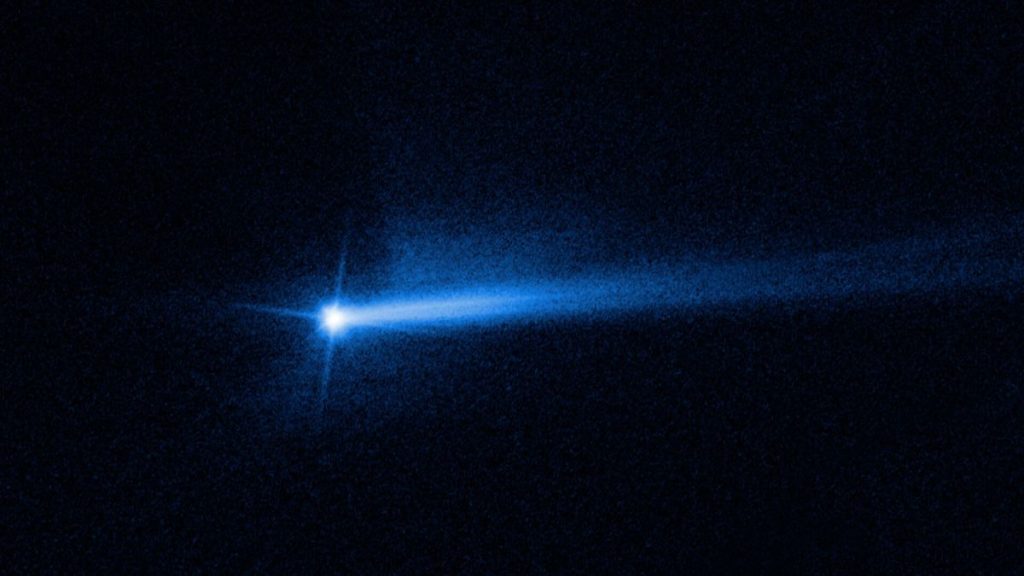A week or two after a NASA spacecraft slammed into an asteroid, scientists have spotted something unexpected: The space rock has grown two tails.
The Double Asteroid Redirection Test (DART) mission walloped a small asteroid called Dimorphos on Sept. 26 to test a potential technique for protecting Earth from an asteroid on a collision course with our planet. Within two days, radiation pressure from the sun pushed the impact debris into a tail, like that of a comet, some 6,000 miles (10,000 kilometers) long.
But now a new image from the Hubble Space Telescope shows that Dimorphos has sprouted not one, but two tails, a development NASA personnel called “unexpected” in a statement (opens in new tab).
Related: Asteroid impact: Here’s the last thing NASA’s DART spacecraft saw before it crashed
If the asteroid itself is the center of a clock, DART came in from 10 o’clock. The bright lines at 1 o’clock, 7 o’clock and 10 o’clock aren’t debris; these are diffraction spikes caused by Hubble’s optics. The two tails appear at 2 o’clock and 3 o’clock, according to a statement (opens in new tab) from the European Space Agency, a partner on the Hubble mission.
The second tail developed sometime between Oct. 2 and Oct. 8, the NASA statement notes. Hubble has observed the asteroid 18 times since the impact.
Astronomers have seen similar twin tails develop in comets, so the development isn’t a total surprise. Still, scientists aren’t sure yet exactly how the second tail formed, according to NASA.
The fact that Dimorphos lost enough material to form such a large tail reflects the severity of the impact. The DART mission’s main goal was to measure how much time the collision cut from Dimorphos’ orbit around a larger asteroid named Didymos. The mission was required to shorten the orbit, originally 11 hours and 55 minutes, by 73 seconds, although scientists estimated before arrival that the change could have been as much as tens of minutes. Instead, the orbit has shortened by 32 minutes, mission personnel announced earlier this month.
Email Meghan Bartels at mbartels@space.com or follow her on Twitter @meghanbartels (opens in new tab). Follow us on Twitter @Spacedotcom (opens in new tab) and on Facebook (opens in new tab).

